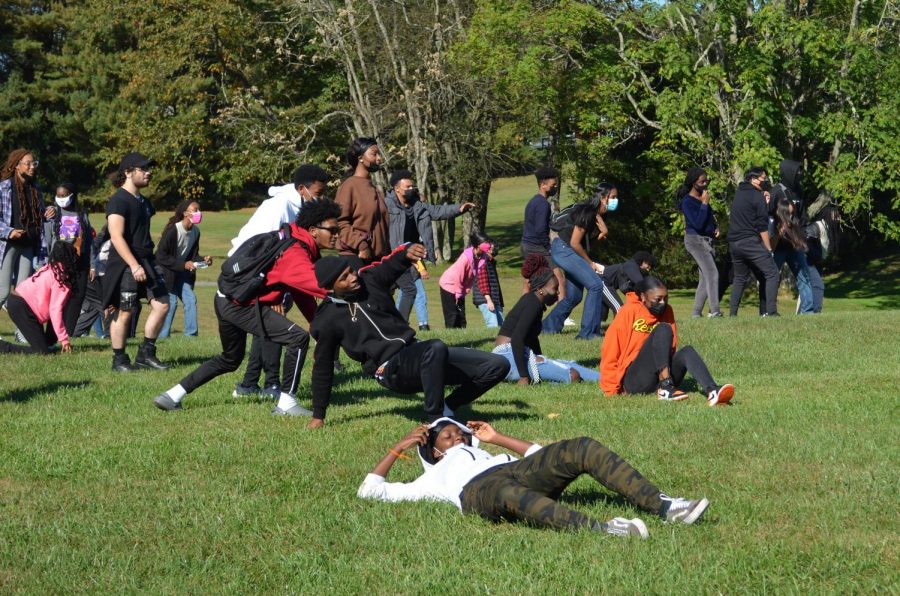What do you believe is the most important health topic to discuss? Finance? Nutrition? Behavioral health?
In the last several years, two of my peers have brought to the table arguments regarding health education in Maryland. In 2020, former Staff Writer Amina Hall crafted a compelling case for extending the required Health and PE credits, citing our nations’ severe lack in child health and safety levels.
Four years later, with all counties now required to administer a full instead of a half year of Health, Staff Writer Betel Mekonnen published an article in January identifying a student grievance with the change. Her claim, she notes, came from observations showing students still engaged in activities discouraged in Health. So, why teach it?
The thing is, health education isn’t just a credit, and doesn’t begin or end within the walls of Paint Branch — and neither do people. Despite valid concerns over the effectiveness of health class due to student behavior, one must embrace the fact that much of student identity resides outside of school. Therefore, much of student education must as well. It takes more than resolute educators to help young people become knowledgeable about their health. This thinking is especially true when it comes to one of the most controversial aspects of health education: sexuality.
Ever since its debut in high schools during the early 20th century, sex education has been a battleground for conflict between our society’s morality status quo and teaching comprehensive, accurate, and inclusive information. Consistently, public schools and facilities like libraries have fought against widespread misconceptions surrounding what’s taught, its effectiveness, and the overall agenda. However, despite how contentious the topic has been for decades, students still deserve adequate access to reliable information.
Advocates for Youth, a non-profit organization dedicated to supporting sex education and awareness among young individuals, lists some misconceptions about sex education. Four misconceptions on their list claim that comprehensive sex education “encourages youth to have sex,” “teaches the mechanics of sex to young children,” “[undermines] parental/family authority,” and “disregards values and morals.” While each of these has already been disproved through research, there is a larger issue that connects them all: kid’s health still holds societal fear at its core. This fear is linked to a collective disbelief in kids’ capacity and the capacity of their support systems to maintain their own well-being.
Kid’s health still holds societal fear at its core.
According to Psychology Today, “Parents play a key role in shaping their children’s views about sexual behavior.” Yet, contrastingly, “evidence also demonstrates that many parents underestimate their role,” with kids reporting “little to no” communication on the matter. If kids aren’t receiving crucial information otherwise, formal education becomes a lifeline for learning; but it shouldn’t be the only resource. Perhaps parents, and society as a whole, should shift focus from trying to sculpt public education into a preferred form and instead work toward establishing dialogue with teachers and staff to best serve their children.
By no means is the job of a parent easy, though, and the plethora of dangers kids face are very real. However, what is often misunderstood is how to practically keep them safe. Keeping children safe starts with a trusting relationship between them and their educators.
When asked how parents obtain information on adolescence, Ms. Chivers, a health educator at PB and a parent herself, suspects that “[parents] base it on themselves . . . and they think that their kids are going to make the mistakes that they made.” She explains how, “Sometimes, we just have to shut up and listen to you guys . . . without judgment.” That sort of active listening is foundational for communication, where parents act as guides versus dictators, and kids feel safe to speak. She also points out how when discussing the subject with her two kids, “[They] don’t talk about it like it’s shameful or funny . . . it’s just very matter-of-fact.”
Our culture becomes so wrapped in all the insinuations that surround sex education, feeding into a deep-seated taboo, that we lose sight of the basic facts about it. That’s why it’s important that in tandem with schools, families seek to listen to and help their children as well.
This sentiment is shared by our school social worker, Ms. Miller, who believes that “the number one thing is to have an open and trusting relationship [and] be a positive role model in developing healthy relationships.” She also explains how “overexposure is not from school [but] from social media.” School isn’t an enemy to one’s values or beliefs, but a necessary baseline that can bolster personal views from a factual standpoint. It is an essential tool with which people can create more informed opinions and, in turn, make safer decisions.
Health education can be a great starting point for understanding health topics, but what really makes it impactful is its reinforcement and application outside of the classroom. Instead of denying the naturally anxiety-inducing reality of sexual activity among adolescents, those with children in their lives can help through their own involvement. This can come in the form of free parent support classes, parent-teacher conferences, and other means of taking an active role in children’s education. Although I do agree with having Health be a half-credit longer to reinforce the concepts previously taught, I also believe that, ultimately, understanding is a holistic process that involves a level of trust between families, teachers, and students, centered on the very real capability of those students to apply what they learn and be responsible for their health.
As Ms. Miller simply puts, “They are very educated on it. I have very informed students.”







































